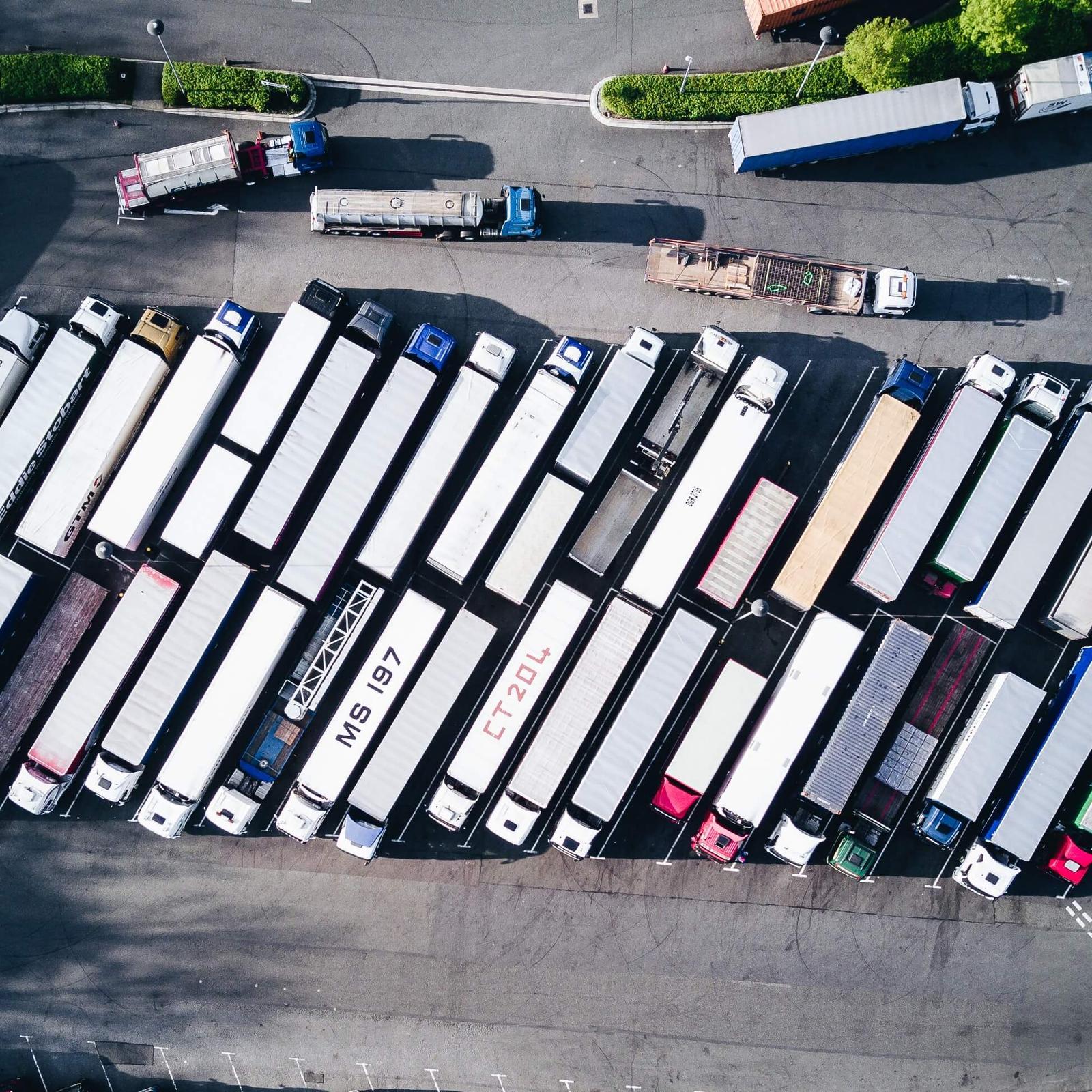Everything you need to know about telematics

Telematics is an integral part of fleet management technology and its future. Here we break down its benefits and applications.
What is Telematics?
Technically, telematics is a combination of telecommunications (real-time distance communication) and informatics (information science). In practice, it’s sending digital information over long distances using wireless forms of communication.
But the term telematics has evolved, especially in the fleet management field, to indicate a more specific meaning: wirelessly monitoring an asset (typically a vehicle) using sensors and an onboard GPS system. Consumer systems such as OnStar also fall under the telematics heading, offering drivers navigation assistance, remote start and vehicle location services, and live assistance in cases of emergency.
One prominent application of telematics is fleet management software, typically used in conjunction with IoT sensors that provide valuable real-time information about vehicles in a fleet. As this field evolves, companies are benefiting from additional data that, when coupled with IoT analytics, yields better decision-making power.
The History of Telematics
The word telematics first appeared in 1978, but the idea sprang from an earlier innovation: global positioning system (GPS) technology. The U.S. government developed GPS in the 1960s as a national security effort during the Cold War era. GPS finally reached the consumer market in the early 1990s—and that’s when companies saw its potential benefits for fleet management. A decade later, many companies were using GPS technology with web-based systems to track their fleets.
GPS tracking was a helpful tool, but the development of further technologies such as cloud and machine-to-machine (M2M—later known as IoT) communications soon gave developers a new set of possibilities. They started to track more detailed information about assets in the field, such as the speed of movement, fuel levels, and tire pressure. This combination of data streams has created a new environment for further development of telematics.
How Do Telematics Systems Work?
Telematics systems depend on several components. Let’s take a closer look at each of them:
Hardware
The hardware components of a telematics solution include at least one tracking device installed in the vehicle. The telematics device allows data to be collected, stored, and sent through the network, typically to a cloud-based system. Vehicles either have an onboard diagnostics (ODBII) port or a controller area network (CAN-BUS) port, SIM card, and modem to enable connectivity.
Telematics devices typically gather and synthesize information from two sources: the onboard diagnostics system and the GPS receiver.
Onboard Diagnostics
Onboard diagnostics may be built into the vehicle or added on in the form of multiple IoT sensors and actuators. Newer vehicles often include onboard diagnostics systems that track fuel levels, engine coolant temperature, transmission speed, and other points of data. Information the onboard diagnostics system collects flows into the telematics system through the ODBII port. The telematics device uses the diagnostics data to monitor driver behavior and fuel consumption.
GPS Data Collection
Using a global satellite network, the GPS receiver identifies the vehicle’s location and passes on that information to the telematics device. Real-time GPS monitoring can help fleet managers identify when trucks are traveling too fast or have stopped unexpectedly. GPS technology can also be used in conjunction with geofencing, or creating a virtual perimeter around a physical area. For example, if a vehicle is parked in a certain area and not expected to be traveling from place to place, managers can create a triggered alert so they will be notified if it appears outside the “fenced” area—indicating that it might be stolen.
Data Aggregation and Analytics
Once a telematics device has collected GPS and onboard diagnostic data, it passes that information along to a platform, typically a cloud-based software service. Managers can access the data remotely in the form of dashboards, graphs, and maps that pinpoint each vehicle in the fleet. With a wide view of hundreds or thousands of assets, companies can reap many benefits from the closer management that telematics systems make possible.
4 Benefits of Telematics Systems
Telematics systems provide many benefits for vehicle fleets, including:
Fuel Cost Reduction
GPS and onboard diagnostics systems can help drivers alter their routes and driving habits to achieve the best possible yield on fuel usage. The ability to monitor and manage fuel usage across a large fleet can yield tremendous cost savings over time.
Productivity Improvements
Vehicle telematics can also improve productivity. Better routes will lead to faster deliveries and real-time tracking allows companies to notify customers about delays so they can plan ahead. Telematics also helps with trip reporting, providing a rich array of data to help companies understand where they can make improvements.
Enhanced Safety
For drivers, onboard diagnostics systems provide safety alerts in case of mechanical problems, allowing them to identify an issue and fix it before it becomes a time-consuming breakdown event. GPS systems provide traffic and even weather alerts to drivers and managers, and other onboard sensors, such as dashcams, can monitor driver habits and trigger alerts if unsafe behaviors are detected.
Simplified Compliance Reporting
Companies involved in the shipment of goods must typically comply with internal or external regulations—and to do that, they have to create comprehensive reports. For example, companies shipping goods within the U.S. must file reports and payments related to the International Fuel Tax Agreement (IFTA). Telematics systems greatly simplify this process by providing and organizing the needed data. In some cases, telematics solutions can gather data and create compliance reports automatically.

5 Applications of Telematics
Applications of telematics achieve greater visibility across assets and vehicle fleets. Let’s take a look at three areas where telematics data can aid companies as they analyze and make use of it.
Vehicle Tracking
For fleet managers, vehicle tracking is essential to monitoring progress. Companies dependent on shipping and deliveries can easily see the benefits, but businesses in other sectors may also benefit from vehicle telematics. For example, small trade businesses can use GPS data to track their employees’ progress from one job site to another—without having to check in via phone. For companies that bill customers by the hour, knowing how long a crew’s vehicle was parked at the job site is also useful.
Asset Tracking
Telematics devices are also helpful for tracking assets beyond roadworthy vehicles—for example, the construction industry uses this technology to keep track of valuable equipment, which is often left on job sites. Equipment theft is a frequent problem for construction companies, and telematics systems can help to prevent it by providing real-time alerts when a machine leaves a particular area.
Predictive Maintenance
Construction and other industries (such as mining) that rely on machinery also use telematics to look at how equipment is being used each day and to provide insights for predictive maintenance. Telematics can provide these insights for vehicle fleets, too. For example, data on tire pressure and coolant temperature can trigger an alert if there’s a problem. This is an example of predictive maintenance, an application used often in industrial IoT. When a part is on the verge of failure, they have time to intervene. In-vehicle sensors also deliver constant, valuable information to drivers, helping them make safer decisions.
Safety Tracking
While earlier technology only monitored the vehicle’s location along a route, today’s telematics systems provide ample data for safety tracking. Managers can see if a driver is speeding, braking or accelerating abruptly, or engaging in other risky behaviors. Telematics data can also be used to reconstruct accidents, both for vehicles on public roads and machines on job sites. The combination of information on location, speed, and other details can help verify eyewitness reports. Dashcams and audio recording devices can add even more safety data.
Insurance Claims
In most telematics applications to date, companies have kept data usage internal. But as this data becomes more organized and accessible, many are starting to use it for insurance claims when there’s an accident. Companies might even choose to share all their data with an insurance company to gain a better policy rating and lower premium costs.
Recommended reading: Guide to IoT asset tracking
Choosing a Telematics Provider
If you’re looking for a telematics solution, start with considering your company’s needs. Fleet management companies need to keep track of hours of service (HOS) and ensure that every vehicle is equipped with an electronic logging device (ELD). Telematics solutions make these legal requirements simpler to fulfill—and offer additional tools that can help you save time and money. If you’re looking for a telematics provider for consumer vehicles, you might look for features like live emergency assistance and remote access to vehicle location and maintenance information. Here are some of the abilities you might want to look for when considering a telematics provider:
- Real-time tracking, including speed and direction
- The ability to create and customize safety alerts and warnings for speeding, rapid braking, or other dangerous driver behaviors
- Keeps a maintenance schedule for each vehicle and alerts drivers and managers about upcoming service needs
- Includes a software app that can be accessed on different devices and operating systems
- Enables instant communication with drivers and/or machine operators in the field
- Data analytics capabilities with customizable dashboards
- Geofencing capabilities
- Integrates easily with other business data systems, such as ERPs
Let’s look at a few examples of telematics providers:
Coretex
Coretex offers solutions tailored for the needs of different sectors such as construction, waste and recycling, and food and beverage. Coretex’s solutions include sensors and dashcams that provide ELD support, predictive maintenance, resources for coaching drivers, and real-time GPS tracking.
Fleetsu
Fleetsu’s cloud-based fleet management software gives fleet owners the ability to monitor vehicles and drivers with fine-tuned precision, gathering data that’s useful for everything from meeting maintenance schedules to detecting driver fatigue. The platform is customizable, and the company’s telematics devices can be adjusted to include custom parameters such as seatbelt, handbrake, and door status.
Fleetpin
New Zealand-based Fleetpin is a telematics solution for fleet management. The company’s GPS devices can deliver real-time tracking with anti-theft alerts, engine reporting, and movement reporting. On the platform side, fleet managers get access to maps with pinpointed vehicles and related information such as speed, current street address location, and past route.
The Future of Telematics
As fleet telematics technology continues to become more sophisticated, these solutions will generate more and more data—and when analyzed, that “big data” will yield even more specific insights. Fleet managers will know not only where their vehicles are at any given moment but will have a more granular understanding of what their drivers are doing, how various parts of the engine are operating, and whether it’s getting too warm or cold in the truck’s storage unit. Insurance companies will integrate telematics, using driver behavior and equipment usage data to create more accurate—and personalized—policies and rates.
And as autonomous vehicle technology develops, telematics systems may work in tandem with AI, computer vision, and other IoT sensors to operate unmanned vehicle fleets. Some industries, such as mining operations, are already using autonomous vehicles to carry loads from place to place on job sites. Whatever the future holds, telematics will continue to play an important role in fleet management and asset tracking solutions.